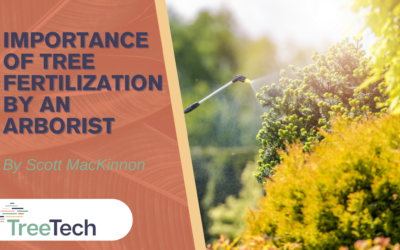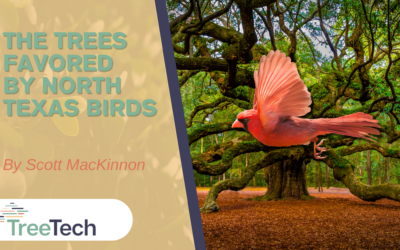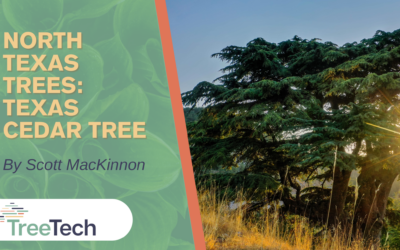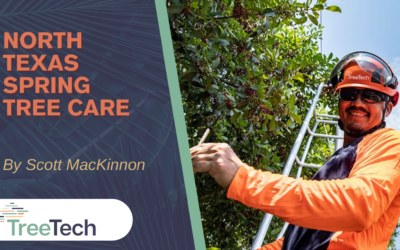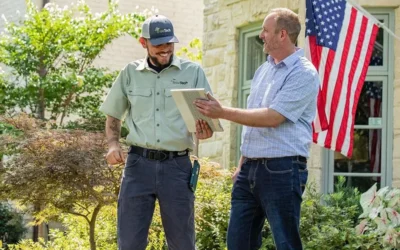Texas Tree Care Guide
in Dallas, TX
Our experts at TreeTech know how to take care of your trees, including Texas Ash Trees. Start learning with us how to identify and treat them properly with our extensive tree services.
Research has shown that urban trees provide a variety of important environmental, economic, and social benefits to our communities. They are much more than aesthetic. The healthier and larger trees are, the more benefits they provide. Trees are worthy of great care!
How Do We Care For Trees As They Deserve?
We study and learn as much as we can about them and their environmental requirements (and challenges) to protect and care for them. TreeTech values education, and we are dedicated to sharing our knowledge with others. Please enjoy our various articles and posts below to learn more about tree care too! Come back and visit often as we regularly add new content and information.
Explore our Tree Education Guide in Dallas, TX, and let our certified arborists in Dallas, TX help you become proficient in tree care. Our professional tree services ensure your trees receive the best care possible.
Importance of Professional Tree Fertilization
North Texas, especially the Dallas and Fort Worth areas are known for hot summers and unpredictable weather patterns this time of the year! Both of which can have a significant impact on the health of trees in our yards.
The Trees Favored By North Texas Birds
North Texas is a region rich in bird diversity, with many species found nowhere else in the world. Whether you're an avid bird watcher or just enjoy the sights and sounds of birds in your backyard, learning about the trees that birds prefer can help you create a...
North Texas Trees: Texas Cedar Tree
The Texas cedar tree, also known as Ashe juniper, is a species of evergreen coniferous tree that is native to the central and southwestern regions of the United States. The tree belongs to the genus Juniperus, which includes over 60 different species of trees and shrubs. Texas cedar is an important species in the ecology of North Texas, and it also has cultural and economic significance for the people who live here.
North Texas Spring Tree Care
Spring is the perfect time for Texas homeowners to get on top of tree care! As the weather warms up and the days become longer, the trees start to grow and bloom. Their strong, sturdy branches provide much-needed shade and add such beauty to your property.
How Trees Improve Environmental Air Quality
Trees play a crucial role in purifying the air we breathe by filtering pollutants, while simultaneously producing more oxygen. The process of air filtration through trees is a complex one, involving multiple physical and chemical processes that work in tandem to remove harmful pollutants from the air. Here are the basics on how trees filter air the air we breathe, the different mechanisms involved, and the benefits of this process.
North Texas Trees: Texas Magnolia Trees
One of the most popular trees in North Texas is the Magnolia tree, also known as Magnolia grandiflora. This magnificent evergreen tree is native to the southern United States, particularly the Gulf Coast region. This gorgeous tree is known for its large, fragrant, white flowers that bloom in the summer and fall. Unlike most trees, its shiny, dark green leaves that remain on the tree throughout the year, even during the winter. With Magnolias growing in popularity, especially in North Texas, it is vital for homeowners to know how to care for these great trees.
The Truth About Professional Arborists
An arborist is a professional who specializes in the care and maintenance of trees. Arborists are trained to assess the health and safety of trees, identify signs of disease and pests, and recommend appropriate treatments and management strategies to improve tree health and prevent safety hazards. They are also knowledgeable about tree biology and can provide advice on tree species selection, placement, and management strategies.
Oak Wilt and Preventing the Spread
Oak wilt is a serious and deadly disease that affects oak trees, this includes Southern Live Oaks, Red Oaks, Bur Oaks, Post Oaks, and Shumard Oaks. It is caused by the fungus called Ceratocystis fagacearum, which invades and blocks the water-conducting tissues of oak trees, leading to their death. The disease is native to North America and can be found throughout the United States, with the highest incidence in the Midwest and southern regions, including North Texas. Once an oak tree is infected with oak wilt, it can die within a few weeks or months, depending on the severity of the infection and the health of the tree.
10 Most Common North Texas Trees
Texas is home to a diverse range of trees, from towering oaks and pines to scrubby mesquites and cacti. Several factors contribute to the diversity of trees in North Texas. One of the primary factors is the region’s climate, which is characterized by hot summers, mild winters, and a moderate amount of rainfall. This climate supports a wide range of tree species, from drought-tolerant species like the Post Oak to moisture-loving species like the Bald Cypress.
Choosing The Right North Texas Trees
Texas has its own unique landscapes and environments! It has rolling hills, deserts, plains, and even wetlands. Each of these landscapes are home to countless plant and wildlife species.
The trees that grow in some parts of this vast state may not be suitable for survival in another. It’s vital to ensure that the trees in your yard have adequate conditions to grow based on their needs. Choosing to ignore the factor of ideal growth conditions can ultimately lead to disastrous results for your trees and also your property.
